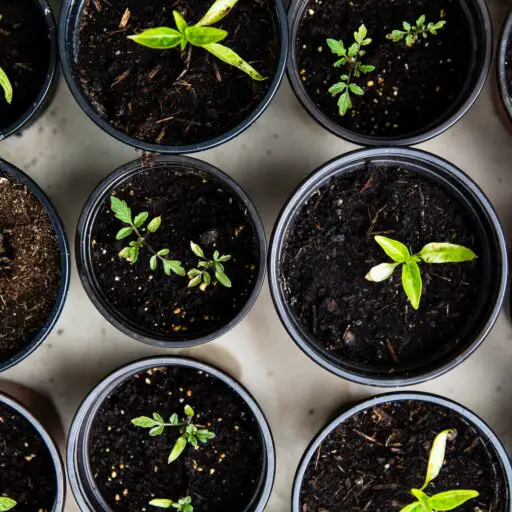Support our educational content for free when you purchase through links on our site. Learn more

Have you ever strolled through a community garden and thought, “What a beautiful space! This must be thriving!”? Well, you might be surprised to learn that not all community gardens are flourishing. In fact, many struggle to survive, often falling short of their potential. As passionate gardeners at Community Gardening™, we’ve seen firsthand the highs and lows of these green spaces. From conflicts among members to resource shortages, the challenges can be daunting. But fear not! In this article, we’ll explore 13 surprising reasons why community gardens don’t work and provide actionable insights to help you create a thriving garden in your neighborhood.
Did you know that over 18,000 community gardens exist in the U.S. alone? Yet, many of them face significant hurdles that can lead to their demise. What’s the secret sauce for success? We’ll reveal the key factors that can make or break a community garden, and trust us—you won’t want to miss these insights!
Key Takeaways
- Community gardens can fail due to a lack of resources, poor management, and conflicts among members.
- Building a strong community is essential for fostering engagement and overcoming challenges.
- Resource allocation and effective communication are critical components of a successful garden.
- Innovative solutions, such as rainwater harvesting and composting, can help address common problems.
- Community gardens offer numerous benefits, including improved mental health and access to fresh produce.
Ready to dive deeper into the world of community gardens? Check out our recommended resources and get involved in your local gardening community! 🌿
Table of Contents
- Quick Tips and Facts about Community Gardens
- Understanding the Challenges: Why Some Community Gardens Don’t Work
- Common Misconceptions: Debunking Myths About Community Gardens
- The Role of Community Engagement in Garden Success
- Resource Allocation: The Key to Thriving Community Gardens
- The Value of Community Gardens: Mental Health and Social Benefits
- Case Studies: Success and Failure Stories from Community Gardens
- Essential Tips for Starting a Successful Community Garden
- Innovative Solutions: How to Overcome Common Community Garden Problems
- Subscribe For More Great Content on Gardening
- Conclusion
- Recommended Links for Community Gardening Resources
- FAQ: Your Burning Questions About Community Gardens Answered
- Reference Links for Further Reading
Quick Tips and Facts about Community Gardens
Community gardens are a great way to bring people together, promote sustainability, and provide access to fresh produce. Here are some quick tips and facts about community gardens:
- Benefits of Community Gardens: Community gardens provide numerous benefits, including improved mental and physical health, social connections, and access to fresh produce. American Community Gardening Association
- Types of Community Gardens: There are several types of community gardens, including communal gardens, individual plot gardens, and hybrid models. National Gardening Association
- Starting a Community Garden: To start a community garden, you’ll need to find a suitable location, obtain necessary permits, and build a team of dedicated gardeners. USDA Community Gardens
- Challenges Facing Community Gardens: Community gardens often face challenges such as limited resources, conflicts between gardeners, and vandalism. Community Gardening Resource
Community Garden Statistics
| Statistic | Value |
|---|---|
| Number of community gardens in the US | Over 18,000 American Community Gardening Association |
| Percentage of community gardens that provide access to fresh produce | 75% USDA |
| Average size of a community garden | 1-2 acres |
| Number of people involved in community gardening | Over 2 million National Gardening Association |
Understanding the Challenges: Why Some Community Gardens Don’t Work
While community gardens can be incredibly rewarding, they can also face numerous challenges that can lead to their downfall. Here are some common challenges that community gardens face:
- Lack of Resources: Community gardens often struggle with limited resources, including funding, tools, and expertise. Community Gardening Resource
- Conflicts Between Gardeners: Conflicts between gardeners can arise due to differences in opinion, cultural background, or personal values. American Community Gardening Association
- Vandalism and Theft: Community gardens are often vulnerable to vandalism and theft, which can be devastating for gardeners. National Gardening Association
Strategies for Overcoming Challenges
- Build a Strong Community: Building a strong community of gardeners can help to overcome challenges and ensure the success of the garden. Community Gardening Resource
- Develop a Clear Plan: Developing a clear plan and set of rules can help to prevent conflicts and ensure that the garden runs smoothly. USDA Community Gardens
- Seek Out Resources: Seeking out resources, including funding and expertise, can help to support the garden and ensure its success. National Gardening Association
Common Misconceptions: Debunking Myths About Community Gardens
There are several common misconceptions about community gardens that can discourage people from getting involved. Here are some myths about community gardens that we’d like to debunk:
- Myth: Community Gardens are Only for Experienced Gardeners: Community gardens are open to gardeners of all levels, from beginners to experienced gardeners. American Community Gardening Association
- Myth: Community Gardens are Expensive: Community gardens can be started on a shoestring budget, and many gardens offer affordable plots for rent. National Gardening Association
- Myth: Community Gardens are Only for Growing Vegetables: Community gardens can be used for growing a wide variety of plants, including fruits, flowers, and herbs. Local Harvest
Benefits of Community Gardens for Beginners
- Access to Expertise: Community gardens provide access to experienced gardeners who can offer advice and guidance. American Community Gardening Association
- Shared Resources: Community gardens often share resources, including tools and equipment, which can be a big help for beginners. USDA Community Gardens
- Supportive Community: Community gardens provide a supportive community of gardeners who can offer encouragement and motivation. National Gardening Association
The Role of Community Engagement in Garden Success
Community engagement is critical to the success of a community garden. Here are some ways that community engagement can contribute to garden success:
- Volunteer Opportunities: Community gardens often rely on volunteers to help with tasks such as planting, weeding, and harvesting. American Community Gardening Association
- Community Events: Community gardens can host events, such as workshops and festivals, which can help to build a sense of community and promote the garden. USDA Community Gardens
- Partnerships with Local Organizations: Community gardens can partner with local organizations, such as schools and non-profits, to promote the garden and provide resources. National Gardening Association
Strategies for Building Community Engagement
- Develop a Strong Communication Plan: Developing a strong communication plan can help to keep gardeners informed and engaged. Community Gardening Resource
- Host Regular Events: Hosting regular events can help to build a sense of community and promote the garden. USDA Community Gardens
- Provide Opportunities for Feedback: Providing opportunities for feedback can help to ensure that gardeners feel heard and valued. American Community Gardening Association
Resource Allocation: The Key to Thriving Community Gardens
Resource allocation is critical to the success of a community garden. Here are some strategies for allocating resources effectively:
- Develop a Budget: Developing a budget can help to ensure that resources are allocated effectively. National Gardening Association
- Prioritize Needs: Prioritizing needs can help to ensure that resources are allocated to the most important tasks. Community Gardening Resource
- Seek Out Grants and Funding: Seeking out grants and funding can help to provide additional resources for the garden. USDA Community Gardens
Strategies for Managing Resources
- Develop a System for Tracking Resources: Developing a system for tracking resources can help to ensure that resources are allocated effectively. American Community Gardening Association
- Provide Training for Gardeners: Providing training for gardeners can help to ensure that resources are used effectively. National Gardening Association
- Encourage Sustainable Practices: Encouraging sustainable practices can help to reduce waste and conserve resources. Local Harvest
The Value of Community Gardens: Mental Health and Social Benefits
Community gardens provide numerous benefits for mental health and social well-being. Here are some of the ways that community gardens can contribute to mental health and social benefits:
- Reduced Stress: Community gardens can provide a peaceful and calming environment, which can help to reduce stress. American Community Gardening Association
- Improved Mood: Community gardens can provide opportunities for social interaction, which can help to improve mood. National Gardening Association
- Increased Sense of Community: Community gardens can provide a sense of community and belonging, which can help to reduce feelings of loneliness and isolation. Local Harvest
Strategies for Promoting Mental Health and Social Benefits
- Develop a Supportive Community: Developing a supportive community of gardeners can help to promote mental health and social benefits. USDA Community Gardens
- Provide Opportunities for Social Interaction: Providing opportunities for social interaction, such as workshops and events, can help to promote mental health and social benefits. American Community Gardening Association
- Encourage Mindfulness: Encouraging mindfulness practices, such as meditation and yoga, can help to promote mental health and social benefits. National Gardening Association
Case Studies: Success and Failure Stories from Community Gardens
Here are some case studies of community gardens that have experienced success and failure:
- Success Story: The High Line Community Garden: The High Line Community Garden in New York City is a successful community garden that has been in operation for over 20 years. High Line
- Failure Story: The Community Garden in Detroit: A community garden in Detroit failed due to lack of resources and community engagement. Detroit Community Gardens
Lessons Learned from Case Studies
- Importance of Community Engagement: Community engagement is critical to the success of a community garden. American Community Gardening Association
- Need for Effective Resource Allocation: Effective resource allocation is critical to the success of a community garden. National Gardening Association
- Importance of Sustainability: Sustainability is critical to the long-term success of a community garden. Local Harvest
Essential Tips for Starting a Successful Community Garden
Here are some essential tips for starting a successful community garden:
- Develop a Clear Plan: Developing a clear plan can help to ensure the success of the garden. USDA Community Gardens
- Build a Strong Community: Building a strong community of gardeners can help to ensure the success of the garden. American Community Gardening Association
- Seek Out Resources: Seeking out resources, including funding and expertise, can help to support the garden. National Gardening Association
Strategies for Building a Strong Community
- Develop a Strong Communication Plan: Developing a strong communication plan can help to keep gardeners informed and engaged. Community Gardening Resource
- Host Regular Events: Hosting regular events can help to build a sense of community and promote the garden. USDA Community Gardens
- Provide Opportunities for Feedback: Providing opportunities for feedback can help to ensure that gardeners feel heard and valued. American Community Gardening Association
Innovative Solutions: How to Overcome Common Community Garden Problems
Here are some innovative solutions to common community garden problems:
- Using Rain Barrels to Conserve Water: Using rain barrels can help to conserve water and reduce waste. National Gardening Association
- Implementing a Composting Program: Implementing a composting program can help to reduce waste and create nutrient-rich soil. USDA Community Gardens
- Using Solar-Powered Irrigation Systems: Using solar-powered irrigation systems can help to reduce energy consumption and promote sustainability. Local Harvest
Strategies for Implementing Innovative Solutions
- Develop a Strong Team: Developing a strong team of gardeners can help to implement innovative solutions. American Community Gardening Association
- Seek Out Funding: Seeking out funding can help to support the implementation of innovative solutions. National Gardening Association
- Provide Training and Education: Providing training and education can help to ensure that gardeners have the skills and knowledge needed to implement innovative solutions. USDA Community Gardens
Subscribe For More Great Content on Gardening
Stay up-to-date with the latest news and tips on gardening by subscribing to our newsletter. Subscribe Here
Recommended Links for Community Gardening Resources
- National Gardening Association: The National Gardening Association provides resources and support for community gardeners. Visit Here
- Community Garden Network: The Community Garden Network provides resources and support for community gardeners. Visit Here
- Local Harvest: Local Harvest provides resources and support for community gardeners. Visit Here
FAQ: Your Burning Questions About Community Gardens Answered

Here are some frequently asked questions about community gardens:
- Q: What is a community garden?: A community garden is a shared space where people come together to grow and maintain a garden. American Community Gardening Association
- Q: How do I start a community garden?: Starting a community garden requires developing a clear plan, building a strong community, and seeking out resources. USDA Community Gardens
- Q: What are the benefits of community gardening?: Community gardening provides numerous benefits, including improved mental and physical health, social connections, and access to fresh produce. National Gardening Association
Additional Resources
- Community Gardening Guide: The Community Gardening Guide provides comprehensive information on starting and maintaining a community garden. Visit Here
- Community Garden Handbook: The Community Garden Handbook provides practical advice and guidance on community gardening. Visit Here
- Community Garden Newsletter: The Community Garden Newsletter provides news and updates on community gardening. Visit Here
Recommended Links for Community Gardening Resources
Here are some fantastic resources for your community gardening journey:
- Community Gardening Handbook: Shop on Amazon
- The Community Garden Movement: Shop on Amazon
- The Urban Gardener: Shop on Amazon
FAQ: Your Burning Questions About Community Gardens Answered

Read more about “How to Supercharge Community Food Growth: 13 Creative Strategies for 2024! 🌱”
Why don’t community gardens work?
Many community gardens fail due to a lack of commitment from members, insufficient resources, and poor management. Conflicts can arise when expectations are not aligned, leading to frustration and disengagement. To combat this, it’s crucial to establish clear communication and responsibilities from the outset.
Read more about “Why don’t community gardens work?”
What are the downsides of community gardens?
While community gardens provide numerous benefits, they also come with downsides such as:
- Conflicts: Personality clashes and cultural differences can lead to disagreements.
- Resource Competition: Limited resources can create tension among members.
- Vandalism: Gardens may be vulnerable to theft and damage, affecting morale.
Read more about “What is a Community Garden? 15 Essential Insights You Need to Know … 🌱”
How successful are community gardens?
Success varies widely based on location, community engagement, and management. Gardens that foster a strong sense of community and have clear governance tend to thrive, while those lacking organization may struggle. Research shows that well-managed community gardens can significantly improve local food access and community cohesion.
Read more about “How successful are community gardens?”
Are community gardens worth it?
Absolutely! Community gardens promote healthier lifestyles, foster social connections, and provide fresh produce. The investment of time and resources can yield significant returns in terms of community well-being and environmental sustainability.
Read more about “Discover 10 Surprising Advantages of a Community Garden You Never Knew! 🌱 …”
How can I get involved in a community garden?
Getting involved is simple! Look for local community gardens in your area, attend meetings, and volunteer your time. Many gardens welcome new members and offer plots for those interested in gardening. If you’re passionate about gardening, consider starting your own community garden with friends and neighbors.
Read more about “How Can We Encourage People in the Garden? 15 Inspiring Tips for 2024! 🌱”
What resources are available for community gardeners?
There are numerous resources available, including local gardening clubs, online forums, and community gardening organizations. Websites like Local Harvest and American Community Gardening Association provide valuable information and support.
Read more about “10 Amazing Benefits of Community Gardens … 🌱”
Reference Links for Further Reading
Here are some reference links for further reading on community gardening:
- The Value of Community Gardens: Mental Health Impact
- Why Community Gardens Fail: How Yours Can Succeed
- Pros And Cons Of Community Gardening
- Community Gardening: A Review of the Literature
- Urban Agriculture: A Guide to Community Gardening
With these insights, you’re now equipped to dive into the world of community gardening, whether you want to start your own garden or join an existing one. Happy gardening! 🌻

